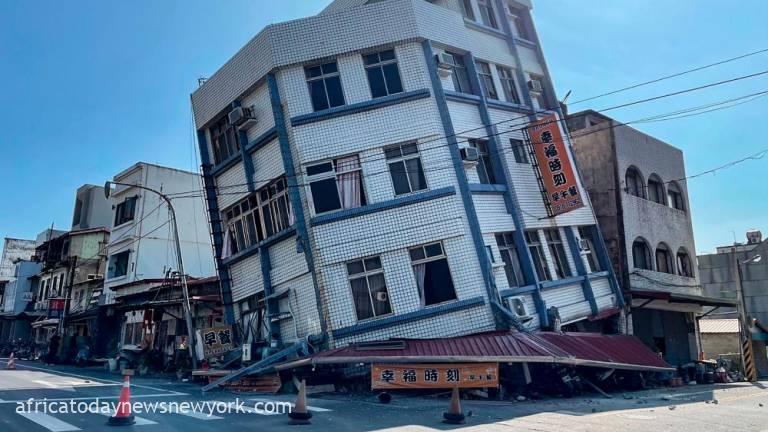On Wednesday morning, a powerful earthquake struck Taiwan, killing four people and injuring nearly 60, while also damaging dozens of buildings. Although tsunami warnings were issued, they were later lifted for Japan and the Philippines.
Officials pointed out that the quake was the strongest to shake the island in decades, and warned of more tremors in the days ahead.
“The earthquake is close to land and it’s shallow. It’s felt all over Taiwan and offshore islands,” said Wu Chien-fu, director of Taipei’s Central Weather Administration’s Seismology Center.
Stringent building regulations and disaster awareness seem to have averted a major catastrophe for the island. The island lies near the intersection of two tectonic plates and is frequently hit by earthquakes.
Wu said the quake was the strongest since a 7.6-magnitude struck in September 1999, killing around 2,400 people in the deadliest natural disaster in the island’s history.
Wednesday’s magnitude-7.4 quake struck just before 8:00 am local time (0000 GMT), with the United States Geological Survey (USGS) putting the epicentre 18 kilometres (11 miles) south of Taiwan’s Hualien City, at a depth of 34.8 kilometres.
Read Also: China Berates Philippines Over Taiwan Congratulations
Three people among a group of seven on an early-morning hike through the hills that surround the city were crushed to death by boulders loosened by the earthquake, officials said.
Separately, a truck driver died when his vehicle was hit by a landslide as it approached a tunnel in the area.
Social media was awash with shared video and images from around the country of buildings swaying as the quake struck.
“I wanted to run out, but I wasn’t dressed. That was so strong,” said Kelvin Hwang, a guest at a hotel in the capital, Taipei, who sought shelter in the lift lobby on the ninth floor.
Dramatic images were shown on local TV of multi-storey structures in Hualien and elsewhere tilting after it ended, while a warehouse in New Taipei City crumbled.
Local TV channels showed bulldozers clearing rocks along roads to Hualien, a mountain-ringed coastal city of around 100,000 people that was cut off by landslides.

